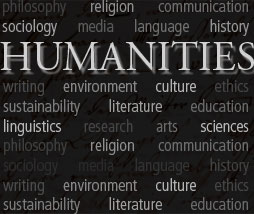If you’ve never been to college, you may ask yourself that question. Most people would much rather focus on courses that relate specifically to their chosen field of study and their career choice. The reality is that colleges and universities require from 30% to 50% of coursework to be general electives (gen eds). I know when I was younger and began my degree in engineering, I was anxious to start my core classes, but I soon learned that those courses would begin in the fourth or fifth semester. Many students may question whether gen eds are a waste of time, but is that true? First of all, all university programs require gen ed courses, so you are working your way toward your final goal. Secondly, you will learn new subjects, and you may develop a new passion. Elective courses also allow you to explore topics that interest you.
Colleges and universities want “well-rounded” graduates, and gen eds provide a comprehensive education. They promote critical thinking across multiple subjects. General education is more than what it is often perceived to be. Fundamentally, the purpose of education is not to train a student for a specific job but equips them with the skills they need to live life (Walters & Bockorn, 2018).
Once I started my gen ed curriculum, it began to make sense. I was experiencing high-level learning and then saw the value of these courses. For those of you who may not have any experience with post-secondary education, and those with limited knowledge of this subject, here are some examples of general education courses by category:
English Language and Literature:
College Composition, Oral Communication
Arts and Humanities:
Arts, Music, Philosophy, Religion, Ethics, History
Social Sciences:
Psychology, Sociology, Anthropology, Economics
Natural Science:
Chemistry, Biology, Anatomy & Physiology, Microbiology
Mathematics:
Algebra, Geometry, Calculus, Statistics
So, we understand that gen eds are required and why, but how can we expedite the completion of these courses and save money? I’ve found that most colleges and universities nationwide provide access to and accept virtually the same courses to satisfy this requirement. One very good and very affordable option for completing these courses in the shortest time possible and for the lowest cost is through Distance Learning Systems.
Here are some of the benefits of utilizing Distance Learning Systems to satisfy this requirement.
- Distance Learning Systems provide a wide assortment of general education courses that satisfy most, if not all, general education requirements.
- All courses provided by Distance Learning Systems are ACE (American Council on Education) recommended.
- Distance Learning Systems has partnership agreements with over 30 of the nation’s finest universities. This guarantees the transferability of all courses completed with Distance Learning Systems into the degree-granting institution.
- All courses are delivered 100% online 24/7.
- Distance Learning Systems provide an accelerated path to over 450 online degree programs.
- The cost of these courses is about 56% less expensive than the average cost of university tuition.
- You have options when beginning a new program or returning to complete your degree. I absolutely see and appreciate the value of these general education courses, but my position has always been and will always be to maximize value and minimize time. Good luck!
Written By: Dave Christy

